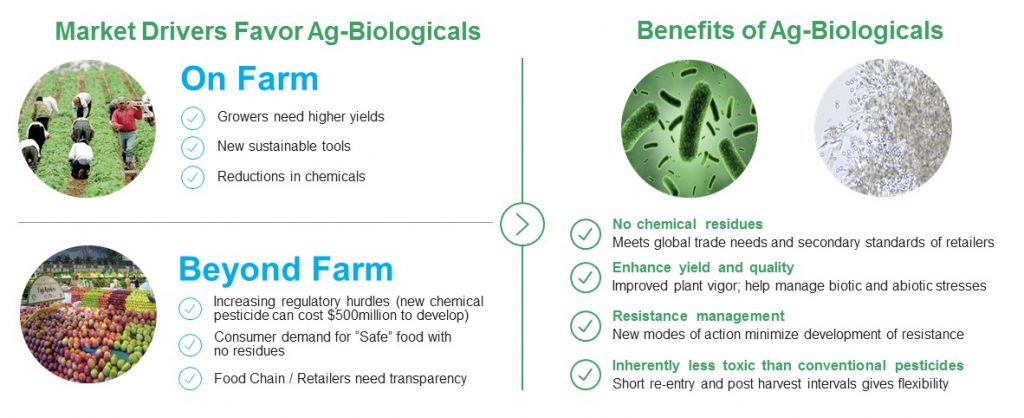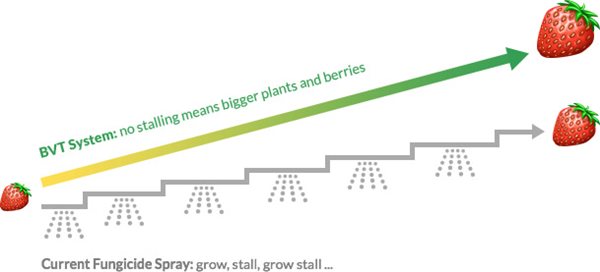Original Article Source: Stockhouse
The Multibillion-Dollar Potential Behind this Headline-Making Agritech Company
Article By: Omri Wallach

Image via Bee Vectoring Technologies.
 How often do we miss the clearest investment opportunities, even when they’re presented right in front of us? That’s why clever investors keep their eyes peeled for openings in multiple places, from website forums to personal anecdotes, and more often than not, the daily news.
How often do we miss the clearest investment opportunities, even when they’re presented right in front of us? That’s why clever investors keep their eyes peeled for openings in multiple places, from website forums to personal anecdotes, and more often than not, the daily news.
When news outlets report on new trends, innovations, and technologies, they often gloss over or completely miss the investment opportunity being presented.
That’s what happened over the past two months, as media coverage has shone a spotlight on a radical new farming technology. Instead of using pesticides, bee vectoring relies on bees to transport beneficial microbes to protect plants.
But while media coverage has painted the technology as new, it’s actually been in the works for decades. For the company behind the innovation, Bee Vectoring Technologies International Inc. (TSX-V:BEE, OTC:BEVVF, Forum), making headlines wasn’t a surprise at all.
One thing the news didn’t cover though, was that this story was much more than a small innovation that helps farmers. What investors have quickly realized about Bee Vectoring Technologies (BVT) is that the Company has a solid, first-mover business model on their hands. Far from chasing trends and headlines, BVT is at the forefront of the next agricultural revolution and looking at a $20 billion dollar market opportunity.
BVT’s top brass, CEO Ashish Malik and Chairman Michael Collinson, recently spoke to Stockhouse Editorial about the Company’s success and growth trajectory. Malik said that the feedback BVT has received from everyone on the technology has been incredible, and shows the team that they’re on the right track.
“Everybody likes what we’re doing, whether it’s an investor or a grower, or a consumer, or even my neighbor. Whomever I tell the story to, they love it. And now it’s evolved to a point where it’s not just a novel story anymore. This makes sense from a business perspective, it’s a real business that’s fitting squarely within a revolution that’s going on in agriculture. We hold one of the keys to making that revolution succeed.”
The agricultural revolution Malik is referring to is in biologicals. Over the last few hundred years, there have been many significant changes in farming practices that have revolutionized crops and crop yields; natural fertilizers, synthetic nitrogen, genetically modified foods, and chemical pesticides. The use of biologicals, naturally occurring microbes, is the next step.

Image via Bee Vectoring Technologies.
Current farming practices continues to see crops sprayed with chemical pesticides, but the agricultural industry is looking to move away from the product and the delivery method. Many are familiar with the harms that pesticides can cause to human consumption and bee populations, but more and more farmers and scientists are also realizing the inefficiency of spraying to protect plants. To cover a whole crop field takes a lot of pesticide and water, much of it wasted, and plants still get missed in the process.
This is where BVT steps in. More than twenty years ago, a few university scientists decided to tackle both problems and see if they could find a way to deliver safe biologicals in an efficient way. Eventually they settled on two unique solutions: an isolated microbial product that helps protect plants from disease, and targeted delivery using bees. What started as a great idea turned into studies, a proof of concept, field trials, and eventually a fully-fledged business model in the 2012 founding of BVT.
Bee vectoring, the unique delivery system that uses bees to deliver microbes to flowers, works directly and in conjunction with commercial hives. In bumblebee hives, BVT-patented dispenser trays are incorporated into the lid of the hive that contains VectoriteTM, the Company’s proprietary powder that holds the beneficial microbes. Bees pick up the powder as they walk through the tray to exit the hive and fly to pollinate flowers (and inoculating the crops in the process).
Video via Bee Vectoring Technologies.
The star of the show, however, is the Company’s flagship biological: CR-7. Scientists picked out the microbe, a beneficial fungus, from more than 1400 different isolates specifically for its extremely beneficial properties. With more than 40 patents worldwide tied to the biological and repeated positive results from studies and field tests, CR-7 deployed through bee-vectoring has demonstrated significant improvement over conventional pesticides.
How significant? The Company partnered with commercial beekeepers and farmers to install its unique systems in hives and prove their effectiveness and safety. On a large-scale strawberry farm in Florida, a combination of BVT’s system and 50% use of pesticides resulted in a 26% increase in marketable yield, more than two controls which used BVT and 100% use of pesticides or pesticides alone.
The results carried over for other crops as well. A major Georgia blueberry grower worked with BVT to evaluate a bumblebee system on a 5-acre test plot in 2018, and the resulting higher yields and reduced incidence of diseases Botrytis and Monilinia (types of fruit rot) made the grower invest in 120 systems for 2019 to cover an entire 40-acre farm. The BVT bumblebee system saw yields improve by 28% over honeybee pollination alone, and in 2020 the grower upped their commitment to cover their entire 150-acre operation.

Image via Bee Vectoring Technologies.
It’s important for investors to note that BVT is operating in completely new territory. When the Company submitted CR-7 for EPA approval, it realized the regulatory body had never before seen an application for microbes to be delivered by bees. Essentially, it created an entirely new category.
Putting everything together now, it’s clear that BVT has all the pieces lined up. The technology is tried and tested, the partnerships have proven fruitful, and on Aug. 28 the Company won EPA approval for CR-7. As CEO Malik highlighted in the interview with Stockhouse Editorial, BVT has paved the way forward, making now the perfect time to invest.
“The Company has reached a point where we’ve de-risked it a lot for investors. In the early years, you have to think about whether or not the technologies are going to work, and regulatory hurdles, and so on. We’ve already solved all of that. We know the technology works, we’ve secured patents around it, and we’ve got endorsements from key influencers on the technology for a handful of crops. Most importantly, we got the EPA registration, which legitimizes us and allows us to go to the next phase of BVT: rapid commercialization.”
With much of the hard work out of the way, the BVT team is now focused on reaping a bountiful harvest of their own sowing: revenue and growth. CEO Malik expects the Company’s first revenues from its initial partnerships in strawberries and blueberries towards the end of 2019, with exponential growth into 2020. Combining the numerous other crops that CR-7 has already proven to be effective for, including apples, tomatoes, sunflowers, and canola, BVT is looking at a US $20 billion market opportunity.

Image via Bee Vectoring Technologies.
But just as the initial stories on the Company undersold the significant opportunity at play, we’ve only begun to scratch the surface with where BVT can grow. Right now, the Company has operations in one country, a handful of profitable crops, and one regulatory-approved biological. As CEO Malik and Chairman Collinson pointed out to Stockhouse Editorial, each pillar of the business has multiple paths for growth.
BVT might currently be looking at a US $20 billion opportunity, but that’s within a greater overall US $240 billion market for chemical and biological agricultural inputs. In Part 2 of our series on Bee Vectoring Technologies, we’ll take a closer look at the massive scalability of this unique agriculture tech company. Stay tuned for a look at where BVT is headed next, and how the global agriculture market as a whole has lined up perfectly for the Company.
FULL DISCLOSURE: This is a paid article produced by Stockhouse Publishing.






